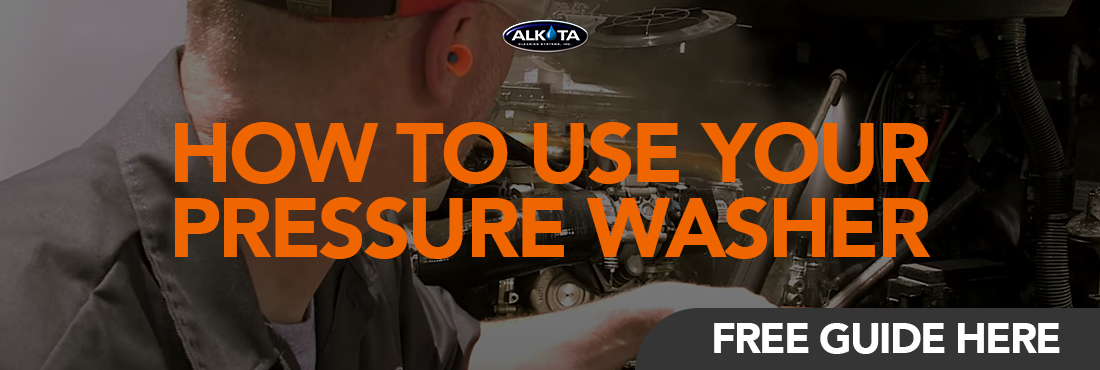
Losing pressure—it’s an issue that nearly all of us have experienced at one time or another while cleaning with a cold or hot pressure washers. When you use Alkota industrial pressure washing equipment, you aren’t just cleaning for fun, although we like to think it is fun! Any time you spend away from the job fixing your machinery translates to real dollars and cents coming out of your pocket. Finding a quick solution to lost pressure is important.
The problem is, there’s no single cause, or solution, for this occurrence. It’s an issue that can send you poring through your manuals, or, more likely, Google search results, searching for a cure.
Here at Alkota, we aim to be your go-to source for all things industrial pressure washer maintenance and usage. That’s why we did the work for you and consulted our team of experts to find the most common reasons your pressure washer is losing pressure, and what you can do to about it.
Check it out!
If there’s one thing we’ve learned over years (and years) of working with pressure washers, it’s that sometimes the most frustrating problems have the simplest solutions.
The problem is, people often jump to the worst case scenario first, before checking to see if a simple fix could work for them. Before you pull out the big guns, check for the following nine reasons you might be losing pressure. We explain them below!

Using an old, worn-out nozzle is a common cause of lost pressure. Luckily, it also has one of the simplest fixes. All you need to do is replace the nozzle and make sure you’re using the proper size. Don’t go by the color of the nozzle; make sure you check the orifice size.
If your belt is slipping, pressure starts to slip as well. Fix by tightening or replacing it, and also making sure you’ve chosen the correct belt to begin with.
This might sound complicated, but it’s really quite simple. All this means is you have some air escaping within the inner plumbing system of your pressure washer. To fix, disassemble, seal the source of the leak, and then reassemble.
Something can go wrong with your relief valve. It can get stuck, partially plugged, or the valve seat may be stuck down. In order to combat these issues, clean and adjust your valve and check its seals to make sure they aren’t worn or dirty. If your relief valve leaks it could indicate a blockage in your heating coil. (see manual for blocked coil) Relief valves are not rebuildable if leak persists it will need to be replaced. Alkota installs the relief valve before the coil to prevent contamination.
Are you noticing a theme? If any of your pressure washer’s parts are clogged, or if you’re using the wrong size, you may notice an issue with the pressure. It’s important to keep your inlet suction strainers clean, and make sure you’re using the correct size. This is a part that should be checked often to ensure its proper function.
Pressure may decrease if your packing is worn out or if there are abrasives or severe cavitation (bubbles) in the pumped fluids. This can be caused by an inadequate amount of water and/or a lack of proper filtration. To fix, install the proper filter. Suction at the inlet manifold should not exceed 5″ mercury vacuum, use a vacuum gauge to measure.
Cleanliness is key when it comes to pressure washer maintenance. Think about it. If your pressure washer isn’t clean, how can you expect it to perform as a cleaning tool? Clean out your valve assemblies to keep your washer performing at 100 percent.
In addition to keeping things clean, replace your worn out seals, clean out foreign materials, and replace your worn valves to prevent blockage and leaks.
If you’re experiencing low pressure, one of your inlets may be restricted, or air may be entering your pump. Ensure that you’re working with the proper size of inlet plumbing, and check for an airtight seal.
These are some of the most common reasons that you might be losing pressure in your pressure washer, and we highly recommend checking them out before jumping to worst-case scenarios. If you want to print a copy of this checklist, click here!
If you still require assistance, we won’t leave you hanging! Contact your local Alkota distributor for service, parts, and helpful tips! Utilize our distributor map to find an Alkota distributor near you!
